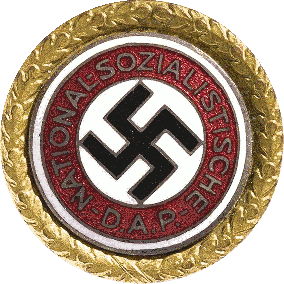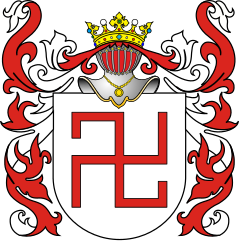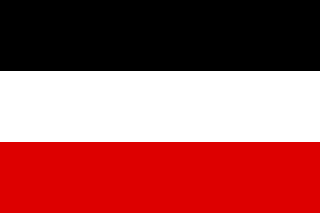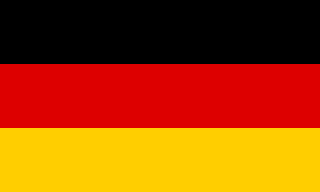-
Welcome to Religious Forums, a friendly forum to discuss all religions in a friendly surrounding.
Your voice is missing! You will need to register to get access to the following site features:- Reply to discussions and create your own threads.
- Our modern chat room. No add-ons or extensions required, just login and start chatting!
- Access to private conversations with other members.
We hope to see you as a part of our community soon!
You are using an out of date browser. It may not display this or other websites correctly.
You should upgrade or use an alternative browser.
You should upgrade or use an alternative browser.
Hinduism and nazi symbol
- Thread starter Starlight
- Start date
The sun-wheel is a pretty universal symbol, not just Dharmic. It was a Germanic symbol too.
Sun cross - Wikipedia
Sun cross - Wikipedia
Last edited:
Why did the nazists use a hindu symbol?
Its also used in Christianity
Secret Chief
nirvana is samsara
Why did the nazists use a hindu symbol?
An extensive answer:
- Wrongfully Accused: The Swastika Is Not Hitler's Hakenkreuz – CoHNA
Kooky
Freedom from Sanity
The branch of German nationalism that the Nazis originated from were strong supporters of race theories that argued that Germanic (and generally Northern European) peoples originated from a mythical race of superior humans called the "Aryans", which were identified with the Indo-Aryan people.Why did the nazists use a hindu symbol?
For this and other reasons (such as the popularity of the Theosophy movement in the Germanophone cultural sphere) a lot of German nationalists developed an almost fetishistic fascination with ancient India, Hinduism, and its symbols. So-called "race scientists" (Rassenforscher) attempted to find evidence for the "ancient Aryan" roots of Germans and Germanic peoples, and many symbols from the Indian cultural sphere, such as the Swastikah, were "found" (i.e. re-imagined) to be remnants of an "ancient Aryan runic script".
So when the Nazis adopted the Swastikah as a symbol of their movement, it had already been fairly popular among the extremistic nationalist fringe groups where they had originated.
Under the Nazi regime, efforts to conceptually link Indo-Aryans and Germans through "race science" naturally increased manifold, and the German state funded several endeavours from crackpot archeology to expeditions to Tibet.
Last edited:
Secret Chief
nirvana is samsara
It is a beautiful symbol.
Hardly surprising, given you have said
fascism can be an extremely effective and efficient course for a group to achieve its objectives.
....&....
If my Weltanschauung incorporates some fascist elements, what’s it to you?
Last edited:
Sirona
Hindu Wannabe
I think this is hair-splitting. Germans like to replace words from foreign languages with "German-sounding" words usually built by the process of referring to them noun-noun. An odd example would be the Nazis trying to replace the German word for nose (from Latin, nasus) with Gesichtserker, "face oriel". So it's fairly obvious that Hitler wouldn't use the term swastika when he had a "good" German word for it instead.
In Germany, Esotericism/New Age has a bad reputation; it is automatically associated with "brown esotericism", at least from the government side.
Groups like the SS are said to have adhered to esoteric ideas and to have read the Bhagavad Gita.
I don't want to innocently condemn anyone, but I have read that in Hindu culture light skin is considered more desirable than dark skin. Supposedly, the word for caste is "varna" (color) and the people with the darkest skin, the indigenous people (adivasis), are said to be disadvantaged.
As a side note, I once visited a Hindu temple in Mauritius and one of the visitors was apparently quite enthusiastic about my light skin. He shouted all the time "hemal, hemal", which probably means "golden, golden".
exchemist
Veteran Member
I think it was all part of their "Aryan" myth, which somehow conflated the term Aryan, meaning Indo-Persian, with the idea of the original Aryans being fair-skinned, for some reason. I presume the swastika was taken from a real or imagined use in Zorastrianism (Also Sprach Zarathustra and all that). But I don't know the details. Maybe someone else can help.Buddhism uses it too, and you can often see it on the chest of Amitabha Buddha.
I am not sure why the Nazi's co-opted the symbol. Like many things, it was culturally appropriated.
Later note: I see now that in fact there has been an explanation already from @Kooky . (It's an annoying feature of this site that posts do not seem to appear immediately. Sometimes there seems to be quite a delay.)
Last edited:
Many good answers here, but no one on the thread pointed out or noticed that
The swastika (please do not pronounce as swastikaa, it is a short 'a') is a symbol of all-auspiciousness, Shubha, red-white and in clockwise direction.
Swasthi = "May everyone be well"
The Nazi symbol is black, and ANTI-clockwise! => a-shubha?
If they did adopt it, they got it all wrong, and probably by Divine Will they got the exact inversion of the original swastika.
Last edited:
Kooky
Freedom from Sanity
I don't know where you got the second picture from, but this here is the NSDAP party badge:Many good answers here, but no one on the thread pointed out or noticed that
The swastika (please do not pronounce as swastikaa, it is a short 'a') is a symbol of all-auspiciousness, Shubha, red-white and in clockwise direction.
Swasthi = "May everyone be well"
View attachment 59103
The Nazi symbol is black, and ANTI-clockwise! => a-shubha?
View attachment 59104
If they did adopt it, they got is all wrong, and probably by Divine Will they got the exact inversion of the original swastika.

As you can see, compared to the Swastikah in your first image, the Hakenkreuz is turned 45 degrees, but points in the same direction.
EDIT: From what I could gather, the second (reversed) Hakenkreuz is a late medieval heraldic symbol, and displayed in the heraldry of several aristocratic families from Central Europe, like the Polish Boreyko family:

Kooky
Freedom from Sanity
The color symbolism is one of German nationalism - specifically, Imperial German nationalism, as the scheme of red-white-black is intended to evoke the image of the Imperial German flag:Most of the times I have seen the anti-clockwise symbol associated with the Nazi -- the one I showed in post #12 above. If you google images -- you will see this too.
This badge is indeed in the clockwise direction but tilted 45 degrees -- but again it is black, not red.

By comparison, German nationalists favoring a liberal or democratic order have always used the older black-red-gold flag of the 1848 revolution (which is also the current flag of democratic Germany):

Where did the gold come from? I note that British Liberal Democrats also use yellow.The color symbolism is one of German nationalism - specifically, Imperial German nationalism, as the scheme of red-white-black is intended to evoke the image of the Imperial German flag:

By comparison, German nationalists favoring a liberal or democratic order have always used the older black-red-gold flag of the 1848 revolution (which is also the current flag of democratic Germany):

ajay0
Well-Known Member
Why did the nazists use a hindu symbol?
The Arya in eastern Dhamic philosophy means the 'noble one' or one of noble character or conduct, characterised by higher states of consciousness and virtuous conduct.This is how it is defined in Hinduism, Buddhism and Jainism.
Unfortunately prejudiced western historians with an agenda in colonial times, misappropriated the term and associated it with the white race instead. This inspite of the fact that the Avatars Rama and Krishna and many others of the ancient epics Ramayana and Mahabharatha have been described to be of a dark complexion.The swastika was also similarly appropriated with racial tones by the Nazis.
Aurobindo defined an ‘Aryan’ as not someone of a particular race, but a person who “accepted a particular type of self-culture, of inward and outward practice, of ideality, of aspiration”.
Swami Ranganathananda, former president of the Ramakrishna Mission had also described the Arya as follows...
' Arya is not a race; Arya means a noble-minded person. The word Arya is often confused with a race. In the beginning, western historians propounded this theory of the Aryan race. That developed into Hitler's Aryan superiority. And when Hitler died, the Aryan race theory also died ! But the word Arya is used in sanskrit always for the noble-minded person.
Take any sanskrit drama. The person will address another character as 'My dear Arya,noble-minded person'. And Buddha spoke of his teachings as Arya-satyani, Noble Truths. Noble is the word for Arya there. The four Noble truths, Arya Satyani. So, the word Arya was used by Buddha, as also by earlier Vedic literature.
And this word, Arya is, therefore, a very great word in Sanskrit. Be an Aryan means, be noble-minded. Don't be petty, don't be small. ' ~ Swami Ranganathananda, commentary of the Bhagavad gita ( Volume 1,Chapter 2.88)
Kooky
Freedom from Sanity
The black-red-gold banner were the colors of German liberal-nationalist student unions.Where did the gold come from? I note that British Liberal Democrats also use yellow.
Some people claim that these three specific colors originate from the uniforms of the Lützow Freikorps where a lot of the very early nationalists served during the Napoleonic Wars.
I'm not convinced, personally, but it's a plausible and popular tale.
I have no idea where the Liberal Democratic colors come from, but it seems that yellow/gold is commonly associated with liberalism and Liberal ideology in many parts of Europe. It seems the FDP (German liberals) also considers yellow its party color, alongside cyan.
Last edited:
Aštra’el
Aštara, Blade of Aštoreth
Hardly surprising, given you have said
A lot of the beauty I see in the “swastika” is how it has come to embody so many different and sometimes even opposing sides of human nature. Honor, dishonor. Peace... war. Hate... love. There are many in betweens as well but the extremities appear to be what people focus on the most. And yes, I see beauty in that. This harmony of conflicting forces- this union of opposition- is beautiful, at least, in my opinion. Any respect and admiration I have for certain aspects of fascism, any acknowledgment of its strengths... have little to do with it.
To elaborate further... the “swastika” is also a sign I myself can find some personal significance in- beyond binary polar opposites- and it primarily comes down to the number 4. There is a Tetramorph of deities in my religion revered as four Exemplars of human nature, worshipped under the supreme God, embodying the attributes of my spirit I wish to develop the most in. An equal armed cross or a swastika is the perfect sign to symbolize that. I tend to go with the equal armed cross with a circle around it, showing that despite how different these sides are, they are all connected, and important, and beautiful in their own ways... and even when there is war between them, some form of harmony remains. The swastika achieves this as well, as the cross’s arms are bent- as if in motion, rotating around a common center point- like a swirling galaxy. 4... yet of 1, like the seasons and the yearly cycles culturally revered by pagans and many others. I can find many meanings in this sign within my own soul as well as the environment around me, within humanity and within nature itself.
Last edited:
